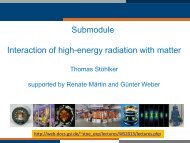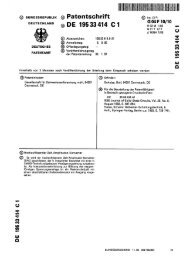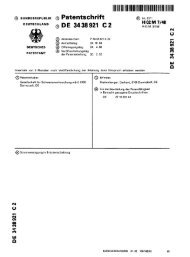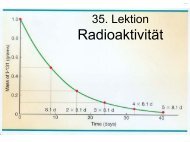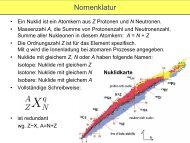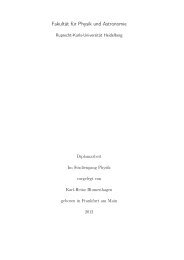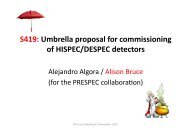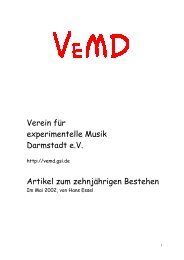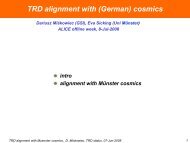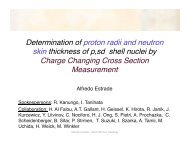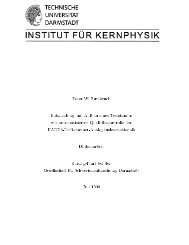doctoral thesis
doctoral thesis
doctoral thesis
Create successful ePaper yourself
Turn your PDF publications into a flip-book with our unique Google optimized e-Paper software.
iv<br />
the University of Graz [2] and were published in [3, 4]. The simulation model presented<br />
in [1] is completed by the dynamic calculation of the space charge field using<br />
these formulas. Since the gas parameters like drift velocity and the Townsend and attachment<br />
coefficients depend on the electric field, they are calculated dynamically as<br />
well. The functional dependence of these parameters on the field is obtained with the<br />
simulation programs MAGBOLTZ and IMONTE. For the primary ionization parameters,<br />
we use the values that are predicted by the program HEED. While the described<br />
procedure only simulates the longitudinal avalanche development towards the anode<br />
of the RPC, we also present more dimensional models that allow a careful study of<br />
the transverse repulsive and attractive forces of the space charge fields, and of the<br />
consequences for the avalanche propagation.<br />
We shall show that the efficiencies of single gap Timing RPCs is indeed explained<br />
by the high primary ionization density (about 9.5 /cm as predicted by HEED) and a<br />
large effective Townsend coefficient (around 113 /mm as predicted by IMONTE). We<br />
show that the space charge field reaches the same magnitude as the applied electric<br />
field in avalanches at large gas gain. This strong space charge effect effectively suppresses<br />
large values for the avalanche charges. The shape of the simulated charge<br />
spectra is very similar to the measurements. Also the simulated average charges are<br />
close to the experimental results. RPCs are operated in a strong space charge regime<br />
over a large range of applied voltage, contrary to wire chambers.<br />
We apply only standard detector physics simulations to RPCs. The performance of<br />
Timing and Trigger RPCs is well reproduced by our simulations. The results concerning<br />
the space charge effect were presented and discussed at the ’RPC 2001’ workshop<br />
[5] and on the ’2002 NSS/MIC’ conference [6].



